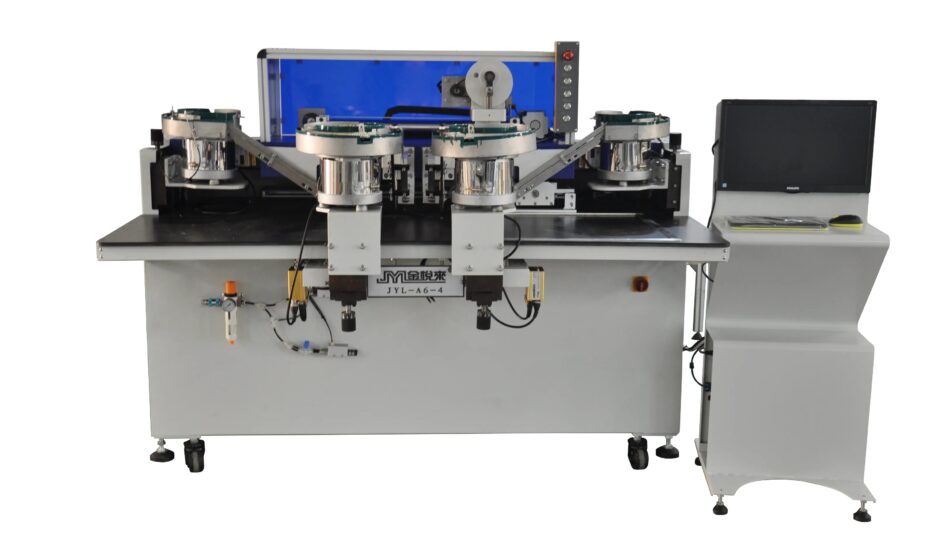In today’s fast-paced manufacturing environment, staying ahead of the curve is crucial. One way to achieve this is by integrating automated riveting machines into your production line. These machines have revolutionised the way we approach assembly tasks, offering a range of benefits that can significantly enhance your operations. In this article, we’ll explore the numerous advantages of automated riveting machines and how they can transform your manufacturing processes.
1. Enhanced Precision and Consistency
When it comes to riveting, precision is key. Automated riveting machine excels in delivering consistent results with minimal deviation. Unlike manual riveting, which is prone to human error, these machines follow programmed instructions with exact accuracy. This consistency ensures that each rivet is placed correctly, reducing the risk of defects and ensuring a high-quality finish on every product.
2. Increased Production Speed
Speed is another significant advantage of automated riveting machines. These machines can operate at a much faster pace than manual labour, which translates to higher production rates. By automating the riveting process, manufacturers can increase their output without compromising on quality. This boost in efficiency can lead to quicker turnaround times and the ability to meet larger order volumes.
3. Cost-Effective Solution
While the initial investment in automated riveting machines may seem substantial, the long-term savings are considerable. These machines reduce the need for manual labour, which can lower labour costs and minimise human errors. Additionally, the increased production speed can lead to greater profitability by allowing manufacturers to produce more units in less time. Over time, the return on investment becomes evident through reduced operational costs and improved financial performance.
4. Improved Workplace Safety
Safety is always a top priority in manufacturing environments. Automated riveting machines help enhance workplace safety by taking over the repetitive and potentially hazardous tasks associated with manual riveting. This reduces the risk of injuries related to repetitive strain and accidents. With fewer manual tasks, workers can focus on more strategic roles, contributing to a safer and more efficient workplace.
5. Greater Flexibility in Production
Modern automated riveting machines are designed with flexibility in mind. They can be easily reconfigured to handle different types of rivets and materials, making them versatile tools for various manufacturing processes. This adaptability allows manufacturers to switch between different product lines or modify designs with minimal downtime. The ability to quickly adjust to new requirements helps companies stay agile in a dynamic market.
6. Enhanced Quality Control
Automated riveting machines come equipped with advanced sensors and monitoring systems that ensure each rivet is placed accurately. These systems can detect and correct any deviations in real-time, which helps maintain high-quality standards throughout the production process. Enhanced quality control not only reduces the likelihood of defects but also ensures that products meet stringent industry standards.
7. Reduced Material Waste
Efficient use of materials is crucial in manufacturing. Automated riveting machines optimise the riveting process to minimise material waste. By applying consistent force and precise placement, these machines ensure that rivets are used effectively without excessive wastage. This not only contributes to cost savings but also supports environmentally sustainable manufacturing practices.
8. Streamlined Workflow
Integration of automated riveting machines can streamline the overall workflow in a manufacturing facility. These machines can be seamlessly integrated into existing production lines, enhancing the efficiency of the entire assembly process. The automation of riveting tasks helps eliminate bottlenecks and ensures a smooth, continuous workflow, leading to increased productivity.
9. Data Collection and Analysis
Many automated riveting machines come with built-in data collection and analysis capabilities. These features allow manufacturers to monitor performance metrics, track production rates, and identify areas for improvement. By analysing this data, companies can make informed decisions to optimise their processes and achieve better outcomes. Data-driven insights contribute to ongoing improvements and operational excellence.
10. Customisation Options
Automated riveting machines offer various customisation options to meet specific manufacturing needs. From adjustable settings for different rivet sizes to programmable features for complex assembly tasks, these machines can be tailored to fit unique requirements. Customisation enhances the versatility and effectiveness of the equipment, providing manufacturers with tools that align with their production goals.
Conclusion
The benefits of automated riveting machines in manufacturing are undeniable. From improved precision and increased production speed to enhanced safety and cost-effectiveness, these machines offer a range of advantages that can significantly impact your operations. By investing in automated riveting technology, manufacturers can stay competitive, achieve higher quality standards, and optimise their production processes. Embracing automation is not just a trend—it’s a strategic move towards a more efficient and successful manufacturing future



